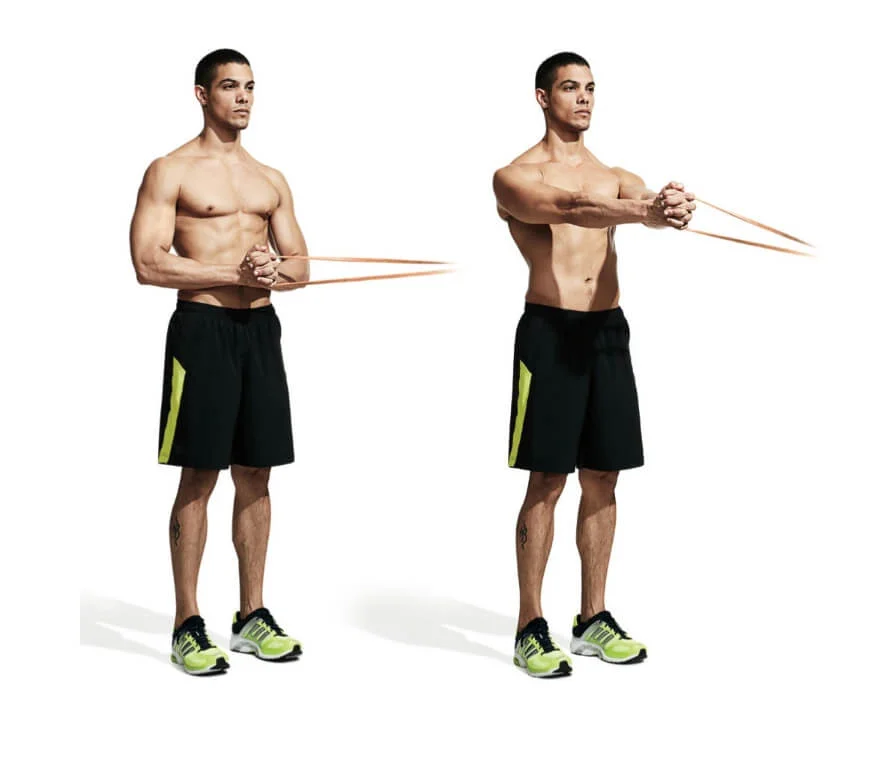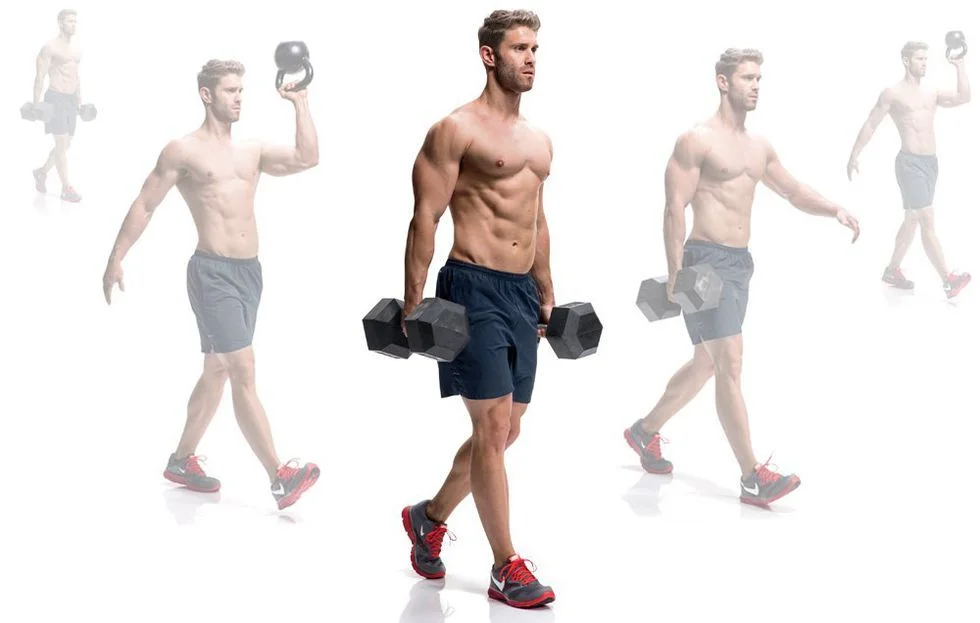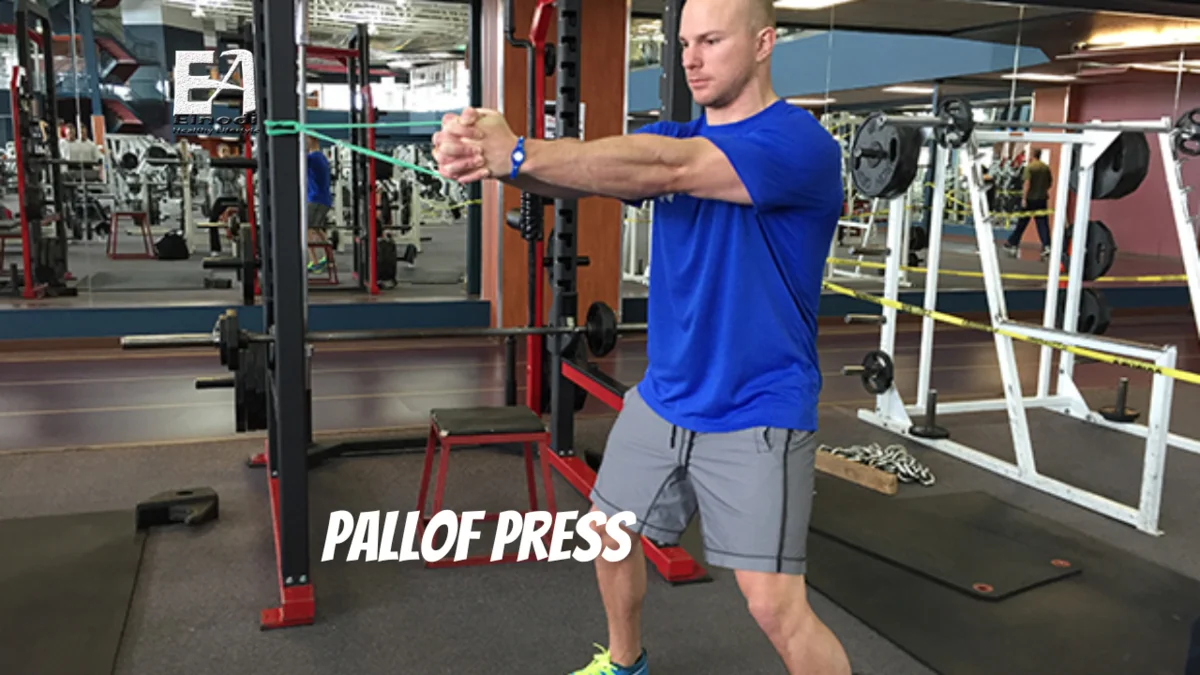Pallof press is one of the best exercises for your abs. This movement uses the muscles of your rectus abdominis and external obliques to squeeze your midsection. It’s a great way to tone and firm your muscles in all areas of the abdomen.
What Is the Pallof Press?
The Pallof press is an “anti-rotational exercise” created by physical therapist John Pallof to improve your core and lower back muscles.
The Pallof press has several versions, but the most common is the Pallof press with the band, also known as the banded Pallof press.
It’s a wonderful exercise for anyone who wants to work on their core and six-pack, but it’s especially beneficial for athletes. That’s because the banded Pallof press develops the core strength and stability required to twist and spin at high speeds without injuring yourself (at least, that’s the notion).
Benefits of Pallof Press
- Improved anti-rotational strength: Strengthening your obliques and abdominals in the rotational plane will help you maintain your spine and hips during explosive movements like swings and strength workouts like squats and deadlifts. (1)
- Side plank alternative: Not everyone has the shoulder, oblique, or hip strength to hold a side plank. It trains similar muscles, has the same benefits, and is easier to perform. (2)
- Great warmup exercise: Performing the Pallof press before deadlifting will help prime your muscles (much like plyometric jumps before squatting) around the core to provide the tension needed to protect your spine.
- Versatility: It is a versatile exercise that can be performed from a number of angles to strengthen your core strength and mobility. It, for example, promotes both hip mobility and core stability. It strengthens the core and increases resistance to spinal flexion, extension, and rotation. It’s a core exercise with everything. (3)
Muscles Worked by Pallof Press
This exercises practically all of the core muscles, which is one of its key advantages. (4)
Specifically, the muscles worked by the Pallof press are the . . .
- Rectus abdominis muscle
- Obliques, both internal and external
- The transverse abdominis muscle
- Spinae Erector spinae
How to do Pallof Press

Instructions
- Begin by wrapping a band around a squat rack’s vertical beam.
- Stand* away from the rack far enough to establish sufficient tension on the band and face perpendicular to the rack.
- You should feel the band pulling and rotating you, but not so much that you lose your equilibrium.
- With one hand, grab the band, and then place the other hand on top.
- Begin by placing your hands directly in front of your sternum.
- The feet should be shoulder-width apart, with the hips and knees slightly bent.
- Press the band straight out in front of you and then return it to the beginning position at a regulated rate.
- A rep for the required number of representatives.
Common mistakes
- This is an anti-rotation workout. Keeping your torso forward is essential, but some people apply too much resistance. This causes your torso to rotate, and all of the benefits are lost. So start light and work your way up.
- Keeping your shoulders down and chest up while pressing in and out ensures that the right muscles are working. Pressing with lifted shoulders is a recipe for disaster.
- Don’t overarch your lower back because this puts your core muscles at a disadvantage and negates all of the benefits. This can be avoided by maintaining a tall posture and engaging your glutes.
Pallof Press variations
Half-Kneeling Pallof Press This variation for beginner and intermediate athletes can use the half-kneeling Pallof press to stabilize the pelvis and maintain a tall and proud posture. Because it is often easy to complete, this is commonly one of the first progressions used with novices.
Double Kneeling Pallof Press This is a simple progression upon the standing version, which will have an individual be down on both knees. This will slightly increase the demands placed upon the core muscles, as the lifter won’t be as stable as they are on two feet.
Pallof Press with Overhead Reach This version adds an overhead reach. Simply follow the normal Pallof press by slowly raising your hands (with the resistance band or cable handle in them) overhead. To maintain good spinal alignment, keep the ribs and belly button pulled down and in towards the body.
Pallof Press Alternatives
Landmine Rotation

The landmine rotation is a dynamic core stability exercise that also works to strengthen scapular stability. This is a wonders anti-rotational exercise for athletes and anybody trying to improve hip rotation and force transfer for more functional motions.
Bird Dog Row

The bird dog and the bird dog row are two core stability exercises that help develop core stability and teach people how to align their spine and tighten their core during pulling and reaching actions. Simply put, it strengthens and improves your core.
Front-Loaded Carry

Front-loaded carries are amazing core-building workouts for all lifters and individuals, whether they are kettlebell front rack walks or sandbag carries. Front-loaded training strengthens the core, requires (and thus improves) appropriate posture, and promotes proper ribcage alignment.
FAQs
When should I do the Pallof press?
Is Pallof press better than Plank?
what is a good weight for pallof press?
What is the rep range for Pallof Press?
References
- 1. Mullane, M., Turner, A. N., & Bishop, C. (2021). The Pallof Press. Strength & Conditioning Journal, 43(2), 121-128.
- 2. Stephens, J., Bacon, E., Evans, C., Locke, S., & McCulloch, R. (2021). Anti-rotational and rotational abdominal exercises and the concurrent muscle activation: a methodology study. In International Journal of Exercise Science: Conference Proceedings (Vol. 8, No. 9, p. 12).
- 3. Crotin, R. L., Iniguez, X. R., & Carlson, E. M. (2022). Proximal Chain Strength and Coordination Concepts to Maximize Injury Protection and Transfer of Training Effects for Competitive Baseball Players. Strength & Conditioning Journal, 10-1519.
- 4. Salas, C., Sintes, P., Joan, J., Urbano, D., Sospedra, J., & Caparros, T. (2020). Conservative management of femoroacetabular impingement (FAI) in professional basketball. Apunts Sports Medicine, 55(205), 5-20.





